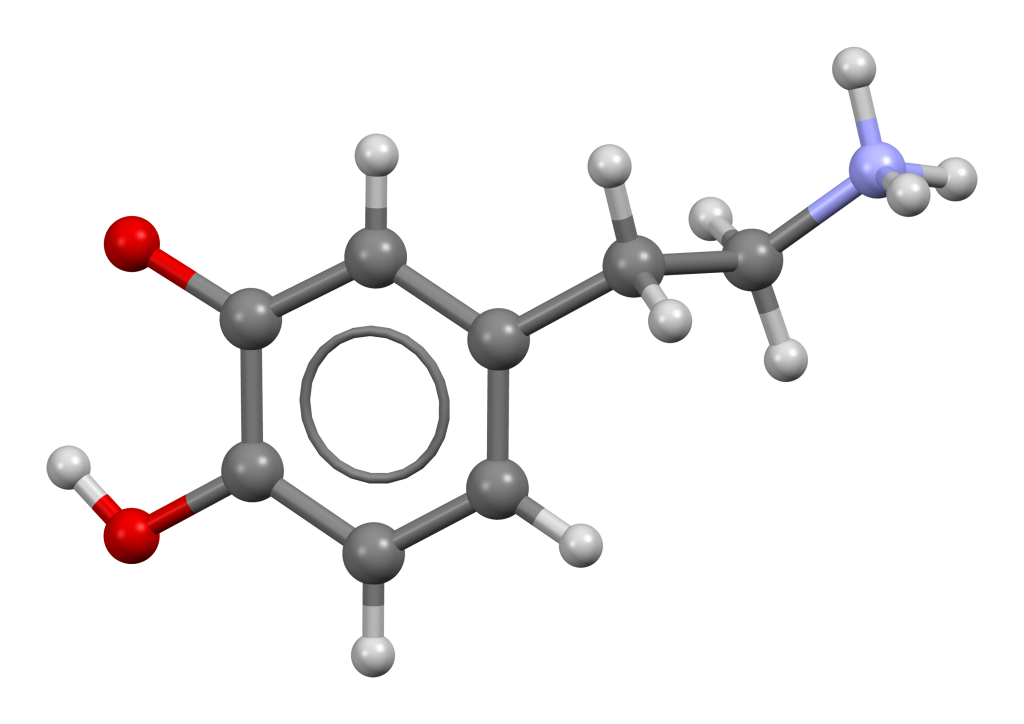Where's Your Motivation?
An Inquiring Mind by Ginny SmithDopamine is often claimed to be a ‘pleasure chemical’, based on the fact that when we experience something pleasant, the dopamine levels in an area of the brain called the nucleus accumbens increase.

But recently, careful experimentation has shown that this isn’t actually linked with our experience of pleasure- dopamine actually has a different role to play.
One of the researchers leading this revolution is John Salamone. Salamone first developed an interest in reward and motivation while working on his dissertation in the UK. He had a sneaking suspicion that dopamine ’ s role was more to do with having the energy and motivation to reach your goal, rather than enjoying it when you got there. As he explained to me,
‘ In chemistry there is this idea of “ energy of activation ” – in order to get a reaction to work you have to put energy into the system. And I sort of made this analogy that in order to get significant things we have to put energy in, we have to act. And I thought that that was close to what dopamine systems were doing. ’
A few years later and now a professor at the University of Connecticut, he decided to find out. He gave hungry rats a choice between bland ‘ rat chow ’ and tasty, sugar-rich food. Over and over again, as you might expect, they chose the sugary option. But then he made the decision a little more difficult. The rats could eat the chow without putting in any work, but to reach the sugar, they had to clamber over a barrier. Using this technique, Salamone could find out exactly how much the sugar was worth to the rats based on how much work they were willing to put in to get the better reward.
Salamone also tested different types of reward (such as a large pile of food versus a smaller one) and different types of work, like a certain number of lever presses. Then, he began to change the amount of dopamine in the animals’ nucleus accumbens. He found a robust pattern. If dopamine levels were increased, the animals would work harder for the preferred reward. If they were decreased, they would tend to go for the easy option.

Dr John Salamone (Pic:UConn)
This was only the case when there was work involved; dopamine-depleted animals would still choose the good reward if all other things were equal, and still seemed to enjoy the tasty food when they were given it. But the dopamine levels had changed something. In effect, it altered how motivated they were to go for the big pay-out, or how much they wanted it.
The animal is still hungry, they are still food motivated. But, they tend to be less likely to work for it. If you eliminate the work requirement, you don’t change anything, they eat the same amount and they still have a preference. We’ve also shown that this is bidirectional – you can give drugs that increase dopamine transmission and increase selection of the high-effort option.
Animal studies are fascinating and can allow us to understand neuroscience at a basic level that we just couldn’t achieve without them, but there is always one big concern. We aren’t the same as rats. So how do we know that dopamine is as important for our motivation as it is for theirs? To try to prove his theory applied in humans as well, Salamone began collaborating with clinical psychologist and neuroscientist Michael Treadway.
Treadway devised a version of Salamone’s task suitable for use in humans. Rather than food, they would earn money but, just like the rats, they would have to work for it. The participant’s challenge was to press a button repeatedly, raising a bar on their computer screen. But they had a choice. They could either use the first finger of their dominant hand to make 30 presses, for a small reward, or the little finger of their non-dominant hand to make 100 presses,[1] for the larger reward. The amount of money they could earn could be varied, and there was another element: the subjects weren’t guaranteed a win even if they completed the task, and the likelihood they would win could be changed. So, the researchers could compare, say, a 12 per cent chance of winning $1 for the easy task or a 12 per cent chance of winning $4 for the hard one with another option where there was an 88 per cent chance of winning the same amounts.
In their first experiment using this technique, Treadway and colleagues found that students who scored higher in anhedonia (a trait which means you enjoy things less, and is one of the most common complaints of people with depression) were less likely to work for the larger reward, particularly when there was a high level of uncertainty around winning the reward. Previous studies have linked anhedonia with low levels of dopamine, so this was a good initial indication that dopamine is important in this form of motivation in humans as well as in rats.
Along with mood symptoms, one of the most common complaints in people with depression is a lack of energy. They lose their desire to do activities that once brought them pleasure, feeling like they are just too tired, and that the reward of doing the enjoyable thing just isn’t worth the effort it would take. So, the pair decided to try their experiment on people with depression. ‘Depressed people also have a low-effort bias, similar to our animals. I started thinking about developing this as a form of animal model.’ This led Salamone to his current work, using rats given a drug called tetrabenazine, which reduces levels of dopamine in the brain[2] , to mimic the motivational symptoms of depression.

Dopamine structure
“And then we started looking at things like what kinds of drugs improved the performance in a tetrabenazine-treated animal. And one of the things we looked at was SSRIs, because they are antidepressants, so they should work. But they didn’t reverse its effects.”
SSRIs, the most common form of antidepressant, boost the amount of serotonin available in the synapses. But as they have no effect on dopamine, it’s perhaps not surprising they didn’t help with motivation. Salamone’s findings exactly mirror the experiences of many humans with depression who are given these drugs. It is common to find that while their mood does improve, fatigue symptoms don’t. Another drug, called Bupropion, which affects both dopamine and noradrenaline, however, did change the rats’ behaviour. Salamone’s next hope is that his work might lead to the development of better drugs to treat the motivational symptoms of depression, as well as similar symptoms, often called fatigue, that are found in many other illnesses.
Find out more about this, and the roles of other chemicals in your brain, in Ginny’s new book Overloaded : How Every Aspect of Your Life Is Influenced by Your Brain Chemicals which is out now.
1 This may not sound too bad, but it is surprisingly difficult – try it!
[2] Tetrabenazine is used to treat the symptoms of Huntington’s disease, but its side effects include depression and fatigue.
 Ginny Smith is a science presenter and writer. A Natural Sciences and Psychology graduate of Cambridge, Ginny performs science shows all over the world and presents a wide range of science content for the likes of the Cosmic Shambles Network and the Naked Scientists. She is the co-author of three DK Publishing books looking at science, food and the human body. Her first solo book, Overloaded is out now from Bloomsbury. She is @GinnySmithSci on Twitter.
Ginny Smith is a science presenter and writer. A Natural Sciences and Psychology graduate of Cambridge, Ginny performs science shows all over the world and presents a wide range of science content for the likes of the Cosmic Shambles Network and the Naked Scientists. She is the co-author of three DK Publishing books looking at science, food and the human body. Her first solo book, Overloaded is out now from Bloomsbury. She is @GinnySmithSci on Twitter.
If you would like to reuse this content please contact us for details
Subscribe to The Cosmic Shambles Network Mailing list here.



